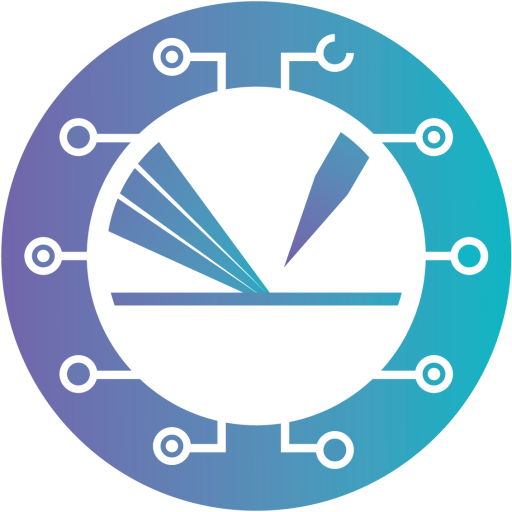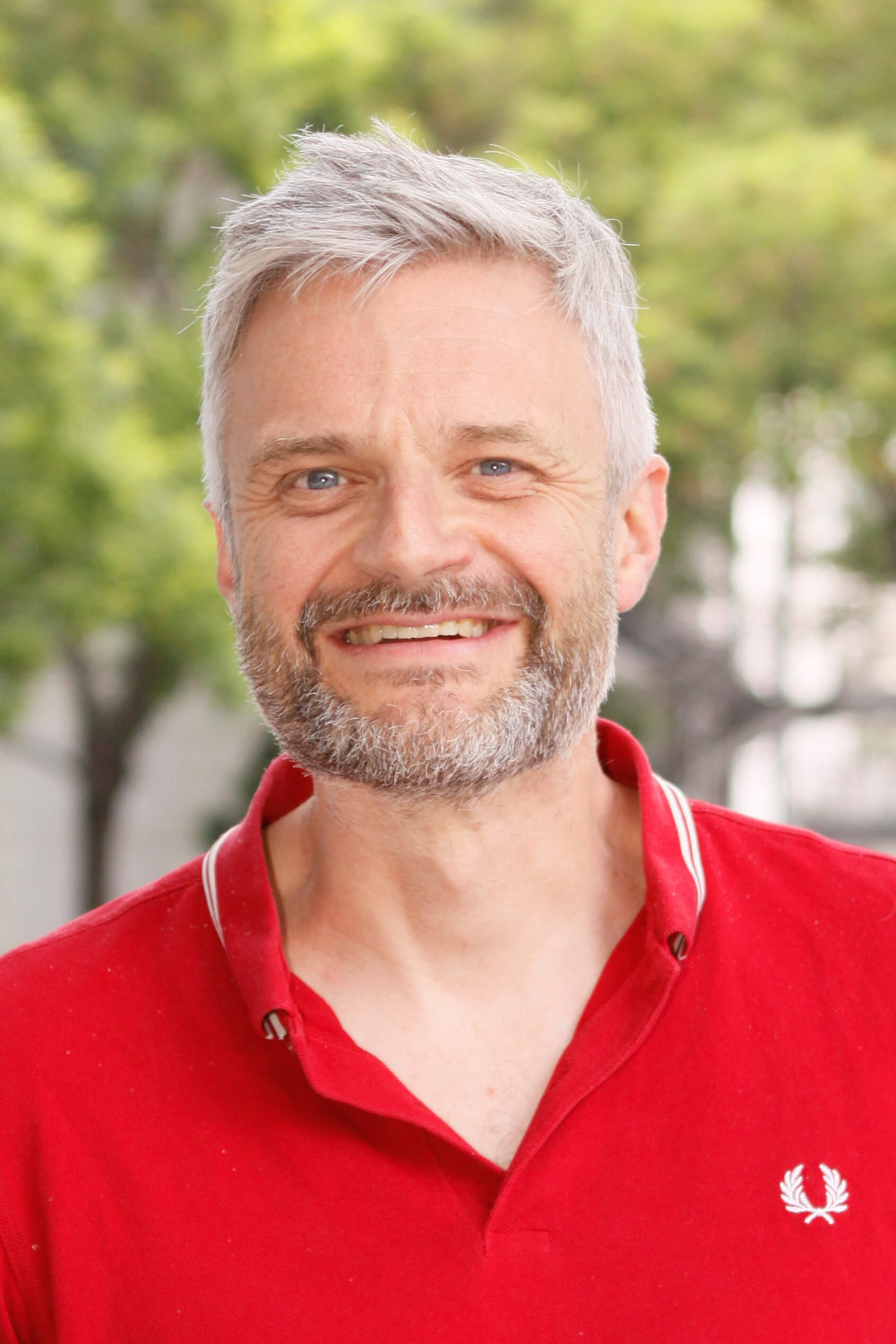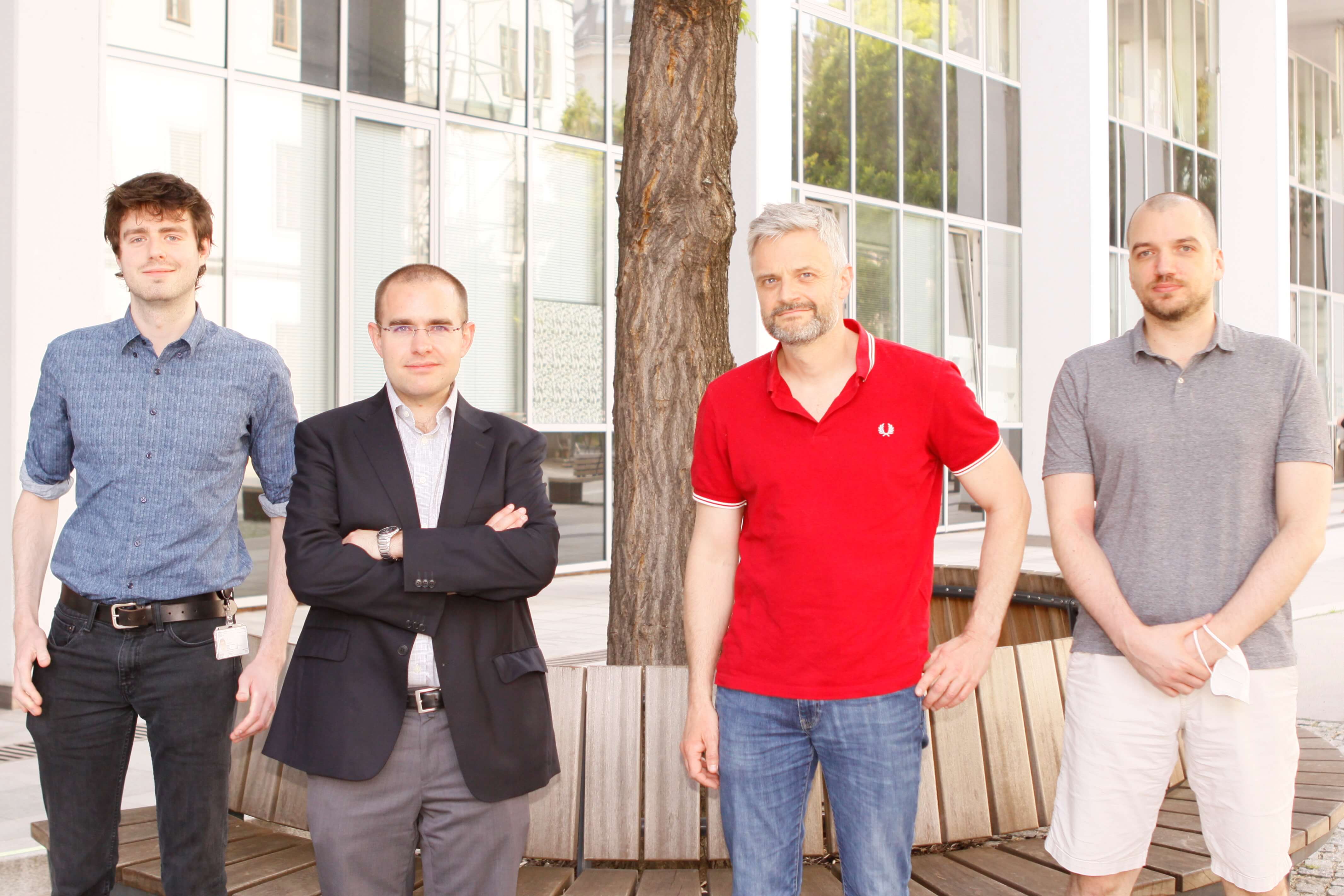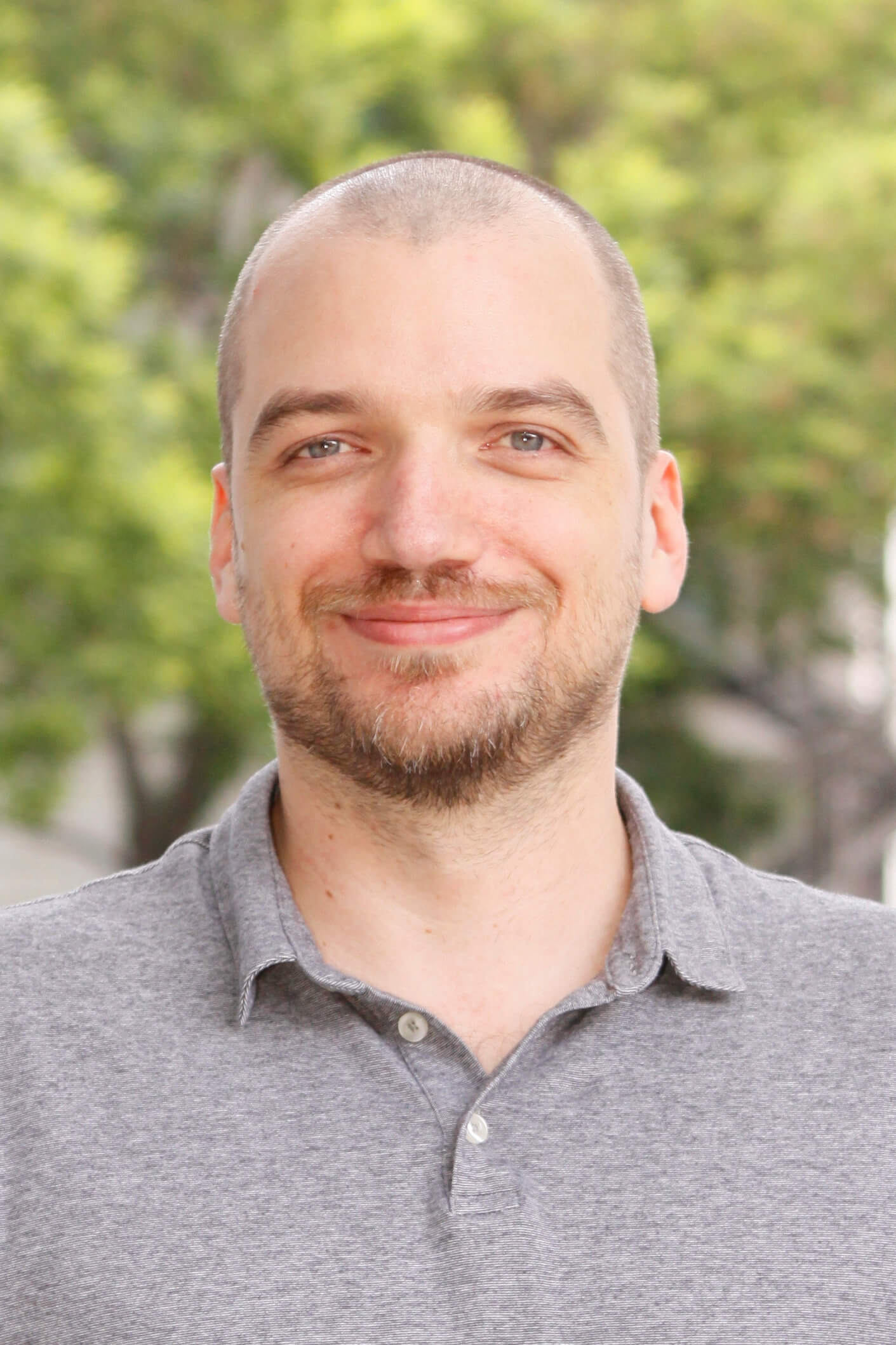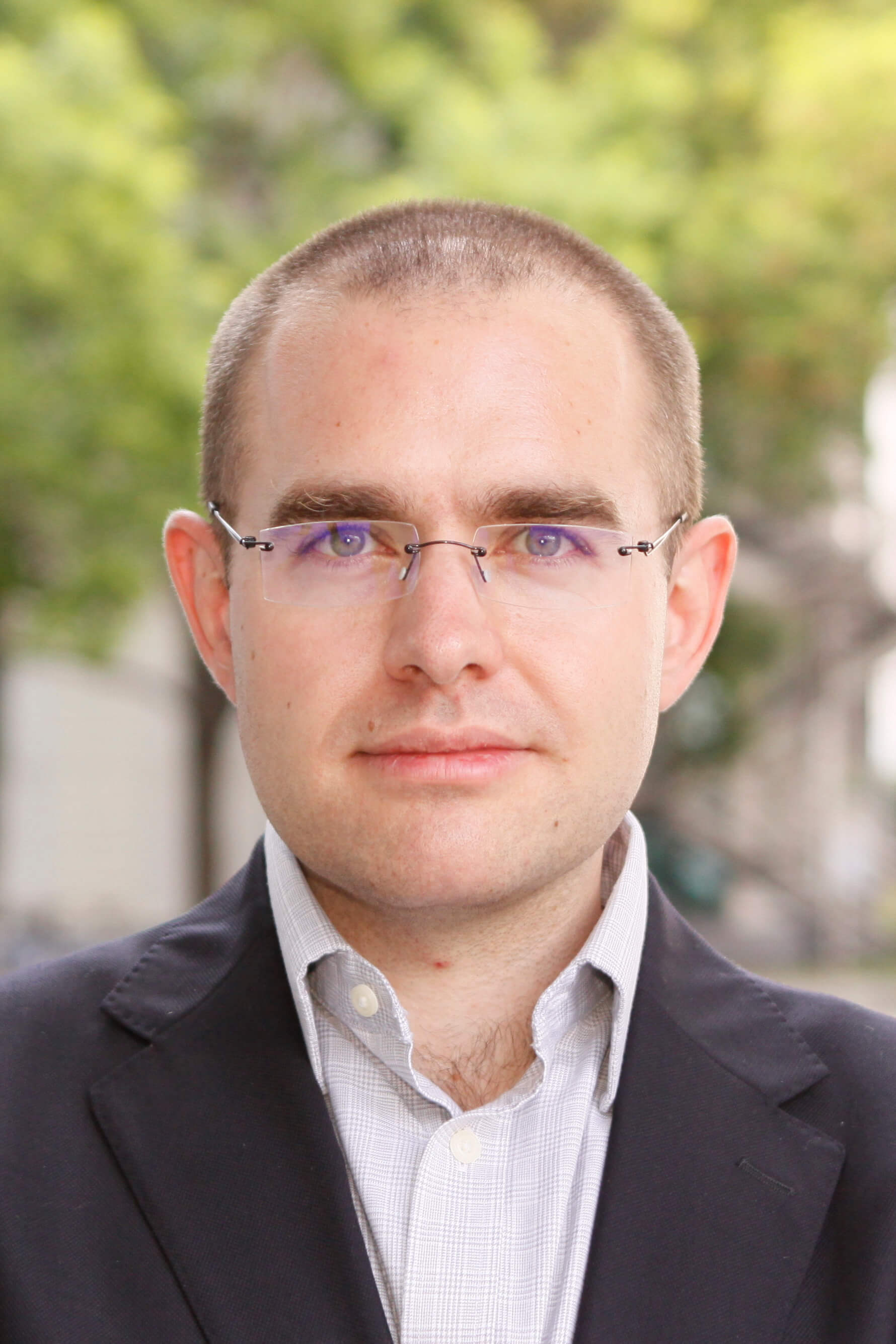Machine-learning methods for structure prediction of multi-component perovskites
Subproject P09
The connection between the composition and function of complex multi-component oxides is intricate, and our knowledge about it is extremely limited. Current models can at most predict the stability of a stoichiometric composition, a very general structural feature. P09 will develop accelerated ML models to predict the structural details that determine the functionality of perovskites. We will implement two approaches:
First, EAs will be combined with an NN potential trained on the fly to quickly explore the energy landscape of perovskite surfaces and predict their detailed structures. In collaboration with experimental partners (P02 Diebold, P04 Parkinson), those structures will be falsified by direct comparison with diffraction data on existing surfaces. Additionally, the implementation, inputs, and results of the machine-learned force fields (MLFFs) will be shared with the theoretical partners for cross-validation.
Second, GANs will be trained on known compositions to identify the key features of real perovskite structures and propose new stable ones.
Expertise
We develop and apply atomistic models for theoretical chemistry and materials science. Our expertise covers both classical and quantum methods, as well as multiscale calculations and machine-learning techniques. The group has taken part in the development and public release of a range of packages for atomistic calculations, including:
- WIEN2k, a popular all-electron density functional theory implementation;
- BoltzTraP and BoltzTraP2, two packages used to interpolate electronic band structures and calculate transport coefficients;
- ShengBTE, the first open-source solver of the Boltzmann transport for phonons, which enables predictive calculations of the thermal conductivity of nanostructures;
- almaBTE, a software package for multiscale thermal transport simulation based on first principles;
- Clinamen, an implementation of the covariance matrix adaptation evolutionary algorithm that helps explore complex energy landscapes.
These are some of the methods we have used to study solids, liquids, surfaces, and nanostructures:
- Density functional theory (DFT);
- Classical and ab-initio molecular dynamics (MD);
- Self-consistent anharmonic free energy calculations;
- The Boltzmann transport equation (BTE);
- Traditional and particle-filter Monte Carlo (MC);
- Covariance matrix adaptation evolutionary algorithm (CMA-ES);
- Classification and regression random forests based on phenomenological information;
- Algorithmically differentiable machine-learning (ML) force fields based on JAX;
- High-throughput (HT) materials screening.
Team
Associates
Former Members
2024
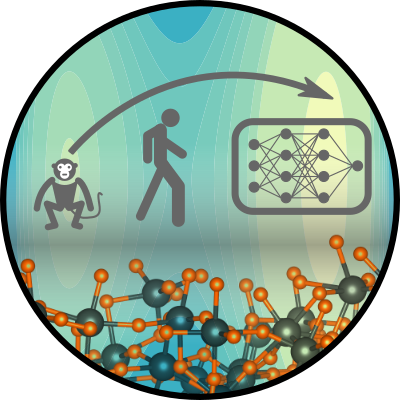
Bichelmaier, Sebastian; Carrete, Jesús; Madsen, Georg K. H.
Neural network enabled molecular dynamics study of HfO2 phase transitions
Journal ArticleOpen AccessIn: Phys. Rev. B, vol. 110, pp. 174105, 2024.
Abstract | Links | BibTeX | Tags: P09
@article{Bichelmaier_2024a,
title = {Neural network enabled molecular dynamics study of HfO_{2} phase transitions},
author = {Sebastian Bichelmaier and Jesús Carrete and Georg K. H. Madsen},
url = {https://arxiv.org/abs/2408.02429},
doi = {10.1103/PhysRevB.110.174105},
year = {2024},
date = {2024-11-07},
journal = {Phys. Rev. B},
volume = {110},
pages = {174105},
abstract = {The advances of machine-learned force fields have opened up molecular dynamics (MD) simulations for compounds for which ab initio MD is too resource intensive and phenomena for which classical force fields are insufficient. Here we describe a neural-network force field parametrized to reproduce the r2SCAN potential energy landscape of HfO_{2}. Based on an automatic differentiable implementation of the isothermal-isobaric (𝑁𝑃𝑇) ensemble with flexible cell fluctuations, we study the phase space of HfO_{2}. We find excellent predictive capabilities regarding the lattice constants and experimental x-ray diffraction data. The phase transition away from monoclinic is clearly visible at a temperature around 2000 K, in agreement with available experimental data and previous calculations. Another abrupt change in lattice constants occurs around 3000 K. While the resulting lattice constants are closer to cubic, they exhibit a small tetragonal distortion, and there is no associated change in volume. We show that this high-temperature structure is in agreement with the available high-temperature diffraction data.},
keywords = {P09},
pubstate = {published},
tppubtype = {article}
}
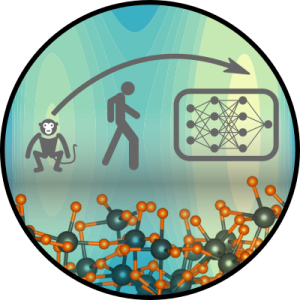
Kovács, Péter; Heid, Esther; Madsen, Georg K. H.
LoGAN: Local generative adversarial network for novel structure prediction
Journal ArticleOpen AccessIn: Machine Learning: Science and Technology, vol. 5, no. 3, pp. 035079, 2024.
Abstract | Links | BibTeX | Tags: P09
@article{Kovacs_2024a,
title = {LoGAN: Local generative adversarial network for novel structure prediction},
author = {Péter Kovács and Esther Heid and Georg K. H. Madsen},
url = {https://iopscience.iop.org/article/10.1088/2632-2153/ad7a4d},
doi = {10.1088/2632-2153/ad7a4d},
year = {2024},
date = {2024-09-23},
urldate = {2024-09-23},
journal = {Machine Learning: Science and Technology},
volume = {5},
number = {3},
pages = {035079},
abstract = {The efficient generation and filtering of candidate structures for new materials is becoming increasingly important as starting points for computational studies. In this work, we introduce an approach to Wasserstein generative adversarial networks for predicting unique crystal and molecular structures. Leveraging translation- and rotation-invariant atom-centered local descriptors address some of the major challenges faced by similar methods. Our models require only small sets of known structures as training data. Furthermore, the approach is able to generate both non-periodic and periodic structures based on local coordination. We showcase the data efficiency and versatility of the LoGAN approach by recovering all stable C_{5}H_{12}O isomers using only 39 C_{4}H_{10}O and C_{6}H_{14}O training examples, as well as all known low-energy SiO_{2} crystal structures utilizing only 167 training examples of other SiO_{2} crystal structures. We also introduce a filtration technique to reduce the computational cost of subsequent characterization steps by selecting samples from unique basins on the potential energy surface, which allows to minimize the number of geometry relaxations needed after structure generation. LoGAN thus represents a new, versatile approach to generative modeling of crystal and molecular structures in the low-data regime, and is available open-source.},
howpublished = {ChemRxiv},
keywords = {P09},
pubstate = {published},
tppubtype = {article}
}
Rafsanjani-Abbasi, Ali; Buchner, Florian; Lewis, Faith J.; Puntscher, Lena; Kraushofer, Florian; Sombut, Panukorn; Eder, Moritz; Pavelec, Jiří; Rheinfrank, Erik; Franceschi, Giada; Birschitzky, Viktor; Riva, Michele; Franchini, Cesare; Schmid, Michael; Diebold, Ulrike; Meier, Matthias; Madsen, Georg K. H.; Parkinson, Gareth S.
Digging Its Own Site: Linear Coordination Stabilizes a Pt1/Fe2O3 Single-Atom Catalyst
Journal ArticleOpen AccessIn: ACS Nano, vol. 18, iss. 39, pp. 26920–26927, 2024.
Abstract | Links | BibTeX | Tags: P02, P04, P07, P09
@article{Rafsanjani_2024a,
title = {Digging Its Own Site: Linear Coordination Stabilizes a Pt_{1}/Fe_{2}O_{3} Single-Atom Catalyst},
author = {Ali Rafsanjani-Abbasi and Florian Buchner and Faith J. Lewis and Lena Puntscher and Florian Kraushofer and Panukorn Sombut and Moritz Eder and Jiří Pavelec and Erik Rheinfrank and Giada Franceschi and Viktor Birschitzky and Michele Riva and Cesare Franchini and Michael Schmid and Ulrike Diebold and Matthias Meier and Georg K. H. Madsen and Gareth S. Parkinson},
url = {https://doi.org/10.1021/acsnano.4c08781},
year = {2024},
date = {2024-09-18},
urldate = {2024-09-18},
journal = {ACS Nano},
volume = {18},
issue = {39},
pages = {26920–26927},
abstract = {Determining the local coordination of the active site is a prerequisite for the reliable modeling of single-atom catalysts (SACs). Obtaining such information is difficult on powder-based systems and much emphasis is placed on density functional theory computations based on idealized low-index surfaces of the support. In this work, we investigate how Pt atoms bind to the (11̅02) facet of α-Fe_{2}O_{3}; a common support material in SACs. Using a combination of scanning tunneling microscopy, X-ray photoelectron spectroscopy, and an extensive computational evolutionary search, we find that Pt atoms significantly reconfigure the support lattice to facilitate a pseudolinear coordination to surface oxygen atoms. Despite breaking three surface Fe–O bonds, this geometry is favored by 0.84 eV over the best configuration involving an unperturbed support. We suggest that the linear O–Pt–O configuration is common in reactive Pt-based SAC systems because it balances thermal stability with the ability to adsorb reactants from the gas phase. Moreover, we conclude that extensive structural searches are necessary to determine realistic active site geometries in single-atom catalysis.},
keywords = {P02, P04, P07, P09},
pubstate = {published},
tppubtype = {article}
}

Wanzenböck, Ralf; Heid, Esther; Riva, Michele; Franceschi, Giada; Imre, Alexander M.; Carrete, Jesús; Diebold, Ulrike; Madsen, Georg K. H.
Exploring Inhomogeneous Surfaces: Ti-rich SrTiO3(110) Reconstructions via Active Learning
Journal ArticleOpen AccessIn: Digital Discovery, vol. 3, pp. 2137-2145, 2024.
Abstract | Links | BibTeX | Tags: P02, P09
@article{Wanzenboeck2024b,
title = {Exploring Inhomogeneous Surfaces: Ti-rich SrTiO_{3}(110) Reconstructions via Active Learning},
author = {Ralf Wanzenböck and Esther Heid and Michele Riva and Giada Franceschi and Alexander M. Imre and Jesús Carrete and Ulrike Diebold and Georg K. H. Madsen},
url = {https://doi.org/10.1039/D4DD00231H},
year = {2024},
date = {2024-09-16},
urldate = {2024-09-16},
journal = {Digital Discovery},
volume = {3},
pages = {2137-2145},
abstract = {The investigation of inhomogeneous surfaces, where various local structures co-exist, is crucial for understanding interfaces of technological interest, yet it presents significant challenges. Here, we study the atomic configurations of the (2×m) Ti-rich surfaces at (110)-oriented SrTiO_{3} by bringing together scanning tunneling microscopy and transferable neural-network force fields combined with evolutionary exploration. We leverage an active learning methodology to iteratively extend the training data as needed for different configurations. Training on only small well-known reconstructions, we are able to extrapolate to the complicated and diverse overlayers encountered in different regions of the heterogeneous SrTiO_{3}(110)-(2×m) surface. Our machine-learning-backed approach generates several new candidate structures, in good agreement with experiment and verified using density functional theory. The approach could be extended to other complex metal oxides featuring large coexisting surface reconstructions.},
keywords = {P02, P09},
pubstate = {published},
tppubtype = {article}
}

Heid, Esther; Schörghuber, Johannes; Wanzenböck, Ralf; Madsen, Georg K. H.
Spatially resolved uncertainties for machine learning potentials
Journal ArticleOpen AccessIn: Journal of Chemical Information and Modeling, vol. 64, iss. 16, pp. 6377–6387, 2024.
Abstract | Links | BibTeX | Tags: P09
@article{Heid_2024a,
title = {Spatially resolved uncertainties for machine learning potentials},
author = {Esther Heid and Johannes Schörghuber and Ralf Wanzenböck and Georg K. H. Madsen},
url = {https://pubs.acs.org/doi/10.1021/acs.jcim.4c00904},
doi = {10.1021/acs.jcim.4c00904},
year = {2024},
date = {2024-08-07},
urldate = {2024-08-07},
journal = {Journal of Chemical Information and Modeling},
volume = {64},
issue = {16},
pages = {6377--6387},
abstract = {Machine learning potentials have become an essential tool for atomistic simulations, yielding results close to ab-initio simulations at a fraction of computational cost. With recent improvements on the achievable accuracies, the focus has now shifted on the dataset composition itself. The reliable identification of erroneously predicted configurations to extend a given dataset is therefore of high priority. Yet, uncertainty estimation techniques have largely failed for machine learning potentials. Consequently, a general and versatile method to correlate energy or atomic force uncertainties with the model error has remained elusive to date. In the current work, we show that epistemic uncertainty cannot correlate with model error by definition, but can be aggregated over groups of atoms to yield a strong correlation. We demonstrate that our method correctly estimates prediction errors both globally per structure, and locally resolved per atom. The direct correlation of local uncertainty and local error is used to design an active learning framework based on identifying local sub-regions of a large simulation cell, and performing ab-initio calculations only for the sub-region subsequently. We successfully utilize this method to perform active learning in the low-data regime for liquid water.},
howpublished = {ChemRxiv},
keywords = {P09},
pubstate = {published},
tppubtype = {article}
}

Wanzenböck, Ralf; Buchner, Florian; Kovács, Péter; Madsen, Georg K. H.; Carrete, Jesús
Clinamen2: Functional-style evolutionary optimization in Python for atomistic structure searches
Journal ArticleOpen AccessIn: Computer Physics Communications, vol. 297, no. 109065, 2024.
Abstract | Links | BibTeX | Tags: P09
@article{wanzenboeck2024,
title = {Clinamen2: Functional-style evolutionary optimization in Python for atomistic structure searches},
author = {Ralf Wanzenböck and Florian Buchner and Péter Kovács and Georg K. H. Madsen and Jesús Carrete},
doi = {10.1016/j.cpc.2023.109065},
year = {2024},
date = {2024-04-30},
urldate = {2024-04-30},
journal = {Computer Physics Communications},
volume = {297},
number = {109065},
abstract = {Clinamen2 is a versatile functional-style Python implementation of the covariance matrix adaptation evolution strategy (CMA-ES) utilizing Cholesky decomposition. On top of a problem-agnostic core algorithm, the software package offers a suite of utilities and library code enabling applications to important atomistic structure searches. Features include massively distributed computation and the BI-Population restart scheme. This article details the general code structure and introduces examples that illustrate some relevant applications for the materials science and chemistry worlds, including interfacing to density-functional-theory codes and machine-learned surrogate models. The functional design renders the code modular and adaptable, and makes the creation of interfaces to other atomistic software straightforward.},
keywords = {P09},
pubstate = {published},
tppubtype = {article}
}
2023

Carrete, Jesús; Montes-Campos, Hadrián; Wanzenböck, Ralf; Heid, Esther; Madsen, Georg K. H.
Journal ArticleOpen AccessIn: The Journal of Chemical Physics, vol. 158, no. 20, pp. 204801-1–204801-18, 2023.
Abstract | Links | BibTeX | Tags: P09
@article{Carrete2023,
title = {Deep ensembles vs committees for uncertainty estimation in neural-network force fields: Comparison and application to active learning},
author = {Jesús Carrete and Hadrián Montes-Campos and Ralf Wanzenböck and Esther Heid and Georg K. H. Madsen},
doi = {10.1063/5.0146905},
year = {2023},
date = {2023-05-22},
urldate = {2023-05-22},
journal = {The Journal of Chemical Physics},
volume = {158},
number = {20},
pages = {204801-1--204801-18},
publisher = {AIP Publishing},
abstract = {A reliable uncertainty estimator is a key ingredient in the successful use of machine-learning force fields for predictive calculations. Important considerations are correlation with error, overhead during training and inference, and efficient workflows to systematically improve the force field. However, in the case of neural-network force fields, simple committees are often the only option considered due to their easy implementation. Here, we present a generalization of the deep-ensemble design based on multiheaded neural networks and a heteroscedastic loss. It can efficiently deal with uncertainties in both energy and forces and take sources of aleatoric uncertainty affecting the training data into account. We compare uncertainty metrics based on deep ensembles, committees, and bootstrap-aggregation ensembles using data for an ionic liquid and a perovskite surface. We demonstrate an adversarial approach to active learning to efficiently and progressively refine the force fields. That active learning workflow is realistically possible thanks to exceptionally fast training enabled by residual learning and a nonlinear learned optimizer.},
keywords = {P09},
pubstate = {published},
tppubtype = {article}
}

Bichelmaier, Sebastian; Carrete, Jesús; Wanzenböck, Ralf; Buchner, Florian; Madsen, Georg K. H.
Neural-network-backed effective harmonic potential study of the ambient pressure phases of hafnia
Journal ArticleIn: Physical Review B, vol. 107, no. 184111, 2023, ISSN: 2469-9969.
Abstract | Links | BibTeX | Tags: P09
@article{Bichelmaier2023,
title = {Neural-network-backed effective harmonic potential study of the ambient pressure phases of hafnia},
author = {Sebastian Bichelmaier and Jesús Carrete and Ralf Wanzenböck and Florian Buchner and Georg K. H. Madsen},
doi = {10.1103/physrevb.107.184111},
issn = {2469-9969},
year = {2023},
date = {2023-05-17},
urldate = {2023-05-17},
journal = {Physical Review B},
volume = {107},
number = {184111},
publisher = {American Physical Society (APS)},
abstract = {Phonon-based approaches and molecular dynamics are widely established methods for gaining access to a temperature-dependent description of material properties. However, when a compound's phase space is vast, density-functional-theory-backed studies quickly reach prohibitive levels of computational expense. Here, we explore the complex phase structure of HfO_{2} using effective harmonic potentials based on a neural-network force field (NNFF) as a surrogate model. We detail the data acquisition and training strategy that enable the NNFF to provide almost ab-initio accuracy at a significantly reduced cost and present a recipe for automation. We demonstrate how the NNFF can generalize beyond its training data and that it is transferable between several phases of hafnia. We find that the thermal expansion coefficient of the low-symmetry phases agrees well with experimental results, and we determine the P¯43m phase to be the favorable (stoichiometric) cubic phase over the established Fm¯3m. In contrast, the experimental lattice constants of the cubic phases are substantially larger than what is calculated for the corresponding stoichiometric phases. Furthermore, we show that the stoichiometric cubic phases are unlikely to be thermodynamically stable compared to the tetragonal and monoclinic phases and hypothesize that they exist only in defect-stabilized forms.},
keywords = {P09},
pubstate = {published},
tppubtype = {article}
}
2022

Wanzenböck, Ralf; Arrigoni, Marco; Bichelmaier, Sebastian; Buchner, Florian; Carrete, Jesús; Madsen, Georg K. H.
Neural-network-backed evolutionary search for SrTiO3(110) surface reconstructions
Journal ArticleOpen AccessIn: Digital Discovery, vol. 1, no. 5, pp. 703–710, 2022.
Abstract | Links | BibTeX | Tags: P09
@article{Wanzenboeck2022,
title = {Neural-network-backed evolutionary search for SrTiO_{3}(110) surface reconstructions},
author = {Ralf Wanzenböck and Marco Arrigoni and Sebastian Bichelmaier and Florian Buchner and Jesús Carrete and Georg K. H. Madsen},
doi = {10.1039/d2dd00072e},
year = {2022},
date = {2022-08-26},
journal = {Digital Discovery},
volume = {1},
number = {5},
pages = {703--710},
publisher = {Royal Society of Chemistry (RSC)},
abstract = {The determination of atomic structures in surface reconstructions has typically relied on structural models derived from intuition and domain knowledge. Evolutionary algorithms have emerged as powerful tools for such structure searches. However, when density functional theory is used to evaluate the energy the computational cost of a thorough exploration of the potential energy landscape is prohibitive. Here, we drive the exploration of the rich phase diagram of TiO_{x} overlayer structures on SrTiO_{3}(110) by combining the covariance matrix adaptation evolution strategy (CMA-ES) and a neural-network force field (NNFF) as a surrogate energy model. By training solely on SrTiO_{3}(110) 4×1 overlayer structures and performing CMA-ES runs on 3×1, 4×1 and 5×1 overlayers, we verify the transferability of the NNFF. The speedup due to the surrogate model allows taking advantage of the stochastic nature of the CMA-ES to perform exhaustive sets of explorations and identify both known and new low-energy reconstructions.},
keywords = {P09},
pubstate = {published},
tppubtype = {article}
}

Montes-Campos, Hadrián; Carrete, Jesús; Bichelmaier, Sebastian; Varela, Luis M; Madsen, Georg K. H.
A Differentiable Neural-Network Force Field for Ionic Liquids
Journal ArticleOpen AccessIn: Journal of Chemical Information and Modeling, vol. 62, no. 1, pp. 88–101, 2022.
Abstract | Links | BibTeX | Tags: P09
@article{MontesCampos2021,
title = {A Differentiable Neural-Network Force Field for Ionic Liquids},
author = {Hadrián Montes-Campos and Jesús Carrete and Sebastian Bichelmaier and Luis M Varela and Georg K. H. Madsen},
doi = {10.1021/acs.jcim.1c01380},
year = {2022},
date = {2022-01-03},
urldate = {2022-01-03},
journal = {Journal of Chemical Information and Modeling},
volume = {62},
number = {1},
pages = {88--101},
abstract = {We present NeuralIL, a model for the potential energy of an ionic liquid that accurately reproduces first-principles results with orders-of-magnitude savings in computational cost. Based on a multilayer perceptron and spherical Bessel descriptors of the atomic environments, NeuralIL is implemented in such a way as to be fully automatically differentiable. It can thus be trained on ab-initio forces instead of just energies, to make the most out of the available data, and can efficiently predict arbitrary derivatives of the potential energy. We parametrize the model for the case of ethylammonium nitrate. We discuss the best way to include chemical information in the atom-centered descriptors for a many-component system. Furthermore, we demonstrate an ensemble-learning approach to the detection of extrapolation. With out-of-sample accuracies better than 0.1 kcal/mol in the energies and 100 meV/Å in the forces, our potential model considerably outperforms molecular-mechanics force fields and opens the door to large-scale thermodynamical calculations with ab-initio-like accuracy for ionic liquids. Including the forces does away with the idea that vast amounts of atomic configurations are required to train a neural network force field based on atom-centered descriptors. We also find that a separate treatment of long-range interactions is not required to achieve a high-quality representation of the potential
energy surface of these dense ionic systems.},
keywords = {P09},
pubstate = {published},
tppubtype = {article}
}
energy surface of these dense ionic systems.
